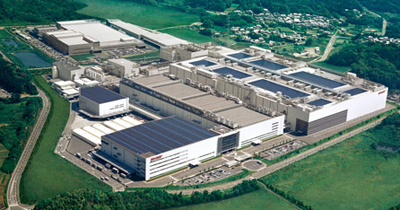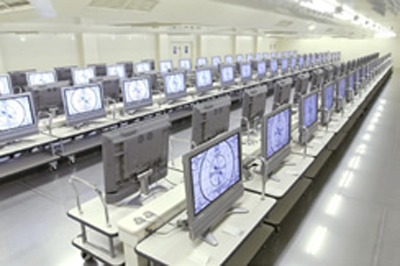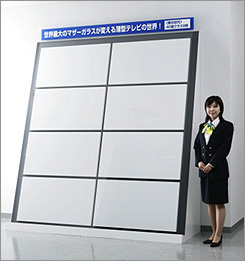JAPAN: Sharp refocuses two LCD TV panel plants to make smaller displays for tablets and smartphones
Faced with oversupply in the LCD TV panel market and unfavourable Yen rates, company decides there's more money to be made in smaller, smarter screens


Sharp has taken a long, hard look at its LCD business, and as a result two of its TV panel plants are being repurposed to produce smaller displays for devices such as smartphones and tablet computers.
Work has already started to shift the focus of production at the Kameyama No 1 plant in Mie Prefecture, Japan (seen above), over to screens of 11in and smaller – think everything from netbooks downwards –, and now the company has decided to do the same with some of the capacity of the newer Kameyama No 2 factory on the same site.
The company plans to be ready to ship samples of the new smaller panels from the No 2 factory by the end of this year, and by this time in 2012 will be able to produce several hundred thousand of the smaller panels.
At the same time Kameyama No 1 is being converted from making LCD TV displays to producing smartphone panels for Apple, with operations there due to resume in 2012.
The large-screen LCD panel production equipment from the factory was sold off to a Chinese panel company in 2009.
The move has been driven by a worldwide glut of TV-size LCD panels, meaning that Kameyama No 2's production capacity – the equivalent of some 21m 32in TV panels a year – is no longer required.
Weak demand for LCD TVs, especially in the Japanese domestic market isn't helping: sales were down even before the earthquake and tsunami last month, thanks to the end of a government eco-points scheme designed to encourage consumers to buy more energy efficient appliances.
Get the What Hi-Fi? Newsletter
The latest hi-fi, home cinema and tech news, reviews, buying advice and deals, direct to your inbox.
Meanwhile the strength of the Yen is making Japanese-made LCD panels expensive for overseas suppliers, and imported panels more attractive to domestic manufacturers.
Sharp believes that the greater complexity of smaller panels – which need high-resolution, greater durability and touchscreen functionality – and thus the higher prices they command, can help it improve earnings.

At the time Kameyama No 1 was opened, in January 2004, it was described as 'The world's most advanced production base for integrated manufacture of large LCD TVs'.
Then that meant 32-37in models, and the factory used sixth-generation glass substrates measuring 1.8x1.5m to produce six 37in screens, or eight 32in displays, per sheet.

These days the more modern factories, such as Sharp's own Sakai facility, use tenth-generation glass, at 2.88x3.13m, which is much better suited to making larger panels.
Kameya No 2 is limited to eighth-gen glass (left), yielding eight 40in panels or six 50-inchers from a 2.16x2.46m sheet.
At the moment both the Sakai and Kameyama plants are idle, due to fuel shortages following the March 11 earthquake and tsunami.
Andrew has written about audio and video products for the past 20+ years, and been a consumer journalist for more than 30 years, starting his career on camera magazines. Andrew has contributed to titles including What Hi-Fi?, Gramophone, Jazzwise and Hi-Fi Critic, Hi-Fi News & Record Review and Hi-Fi Choice. I’ve also written for a number of non-specialist and overseas magazines.
